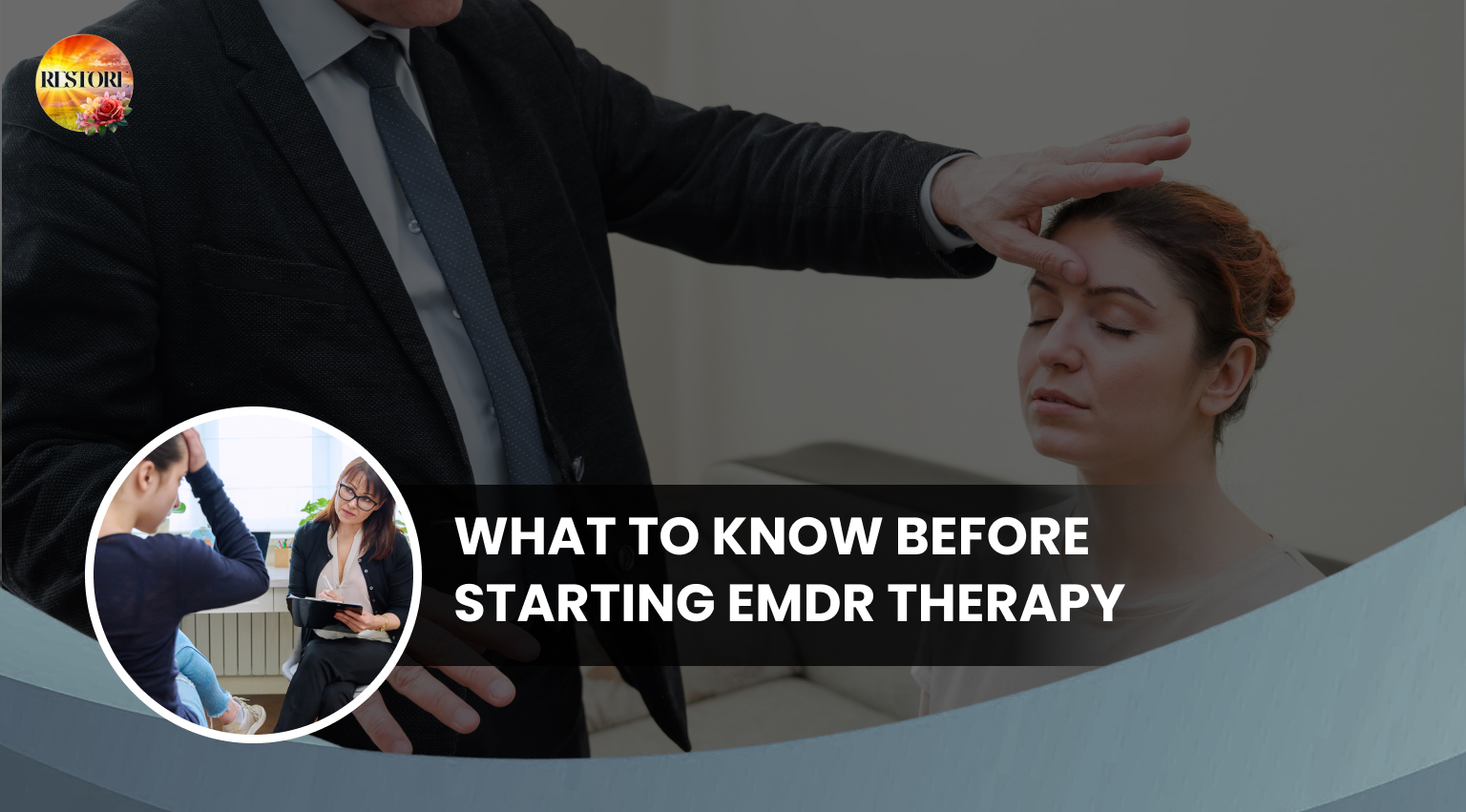
EMDR treatment may have caught your attention if you have been looking for approaches to recover from trauma, anxiety, or emotional pain. For people looking for long-lasting emotional release, EMDR has evolved into a potent weapon thanks to its increasing popularity and solid professional support. Before you start, though, you must grasp how it works, what to expect, and how to choose the appropriate therapist for you.
We’ll walk you through all you need to know about EMDR therapy in this guide.
Eye Movement Desensitization and Reprocessing stands as EMD. Designed to help people process and heal from traumatic events and upsetting memories, this psychotherapy approach
EMDA helps clients reinterpret and lessen the emotional charge connected with past traumas by emphasizing the brain’s innate healing mechanisms unlike conventional talk therapy.
Originally designed to treat PTSD, EMDR has since been shown successful for a range of problems including anxiety, sadness, phobias, grieving, and even chronic pain.
EMDR therapy is predicated on the theory that unresolved traumatic memories are stored incorrectly in the brain, causing psychological and emotional suffering. EMDR uses a methodical eight-phase approach to help the brain reprocess these memories so they become less upsetting and are better incorporated into your whole life narrative.
Bilateral stimulation—usually utilizing guided eye motions, tapping, or audio tones—is one of the fundamental elements of EMDR. The therapist will walk you through left-right stimulations as you concentrate on a disturbing memory. This bidirectional activity is thought to enable the brain to “digest” painful memories and make sense of them without allowing strong emotion to overwhelm it.
Psychologist Francine Shapiro created EMDA treatment in 1987 after seeing that some eye movements appeared to lower the emotional intensity of her own upsetting recollections. She then carried out controlled research and polished the approach into a uniform treatment tool.
EMDR has been advised by reputable organizations including during the past few years and has had significant clinical research under direction.
APA, or American Psychological Association,
WHO, the World Health Organization,
VA Department of Veterans Affairs
EMDR is now acknowledged as among the most successful therapies available for trauma-related problems anywhere.
Among the several advantages EMDR treatment provides are:
EMDR therapy is appropriate for many kinds of people, including those who have gone through:
Knowing what a normal EMDR session looks like will help you to relax any anxiety you might be experiencing:
To decide whether EMDR is suitable for you, the therapist compiles details on your background, symptoms, and goals.
To help you control emotional pain that could surface during sessions, you will pick up coping mechanisms and relaxation skills.
You will name particular target memories to focus on as well as the related ideas, emotions, and body sensations.
By means of bilateral stimulation—eye movements, tapping, or sounds—you will process the memory, therefore enabling the reduction in its emotional charge.
Positive views are reinforced and combined with the processed memory.
Body Scan: You will look for residual physical tension connected to the memory and, should necessary, address it.
Every session closes with checking you are grounded and relaxed.
Beginning the next session, the therapist reviews development and modifies the strategy as necessary.
Every client travels through EMDR in a different way, hence the speed will be adjusted to your situation and degree of preparation.
A good EMD experience depends on selecting the correct therapist. Here’s what to search for:
Make sure the therapist has undergone specific EMDR training from reputable companies such as EMDRIA (EMDR International Association).
Experience: Ideally, pick a therapist with a lot of EMDA experience addressing problems just like yours.
Personal Fit: Your therapist should make you comfortable, heard, and appreciated.
Directories including EMDR-certified therapists allow you to search for them:
Find a Therapist Directory available from EMDRIA
Trauma recovery centers or local psychology boards
Although most individuals find EMDR harmless, it’s crucial to be aware of possible adverse effects including:
Processing traumatic memories might occasionally momentarily aggravate emotions including worry, grief, or rage.
Some individuals report vivid dreams or memories following sessions; usually, they fade as therapy advances.
EMDR treatments can be emotionally charged, which leaves you exhausted later.
Should you have a history of dissociation, complex PTSD, or serious mental illness, your therapist may exercise extra care and include EMDR more gradually.
Beginning EMDR therapy can be a transforming path toward emotional freedom and healing. Understanding the method, establishing reasonable expectations, and selecting a good therapist will help you maximize your EMD experience.
EMDR treatment can be just what you have been looking for if you are ready to let go of the past go boldly forward.